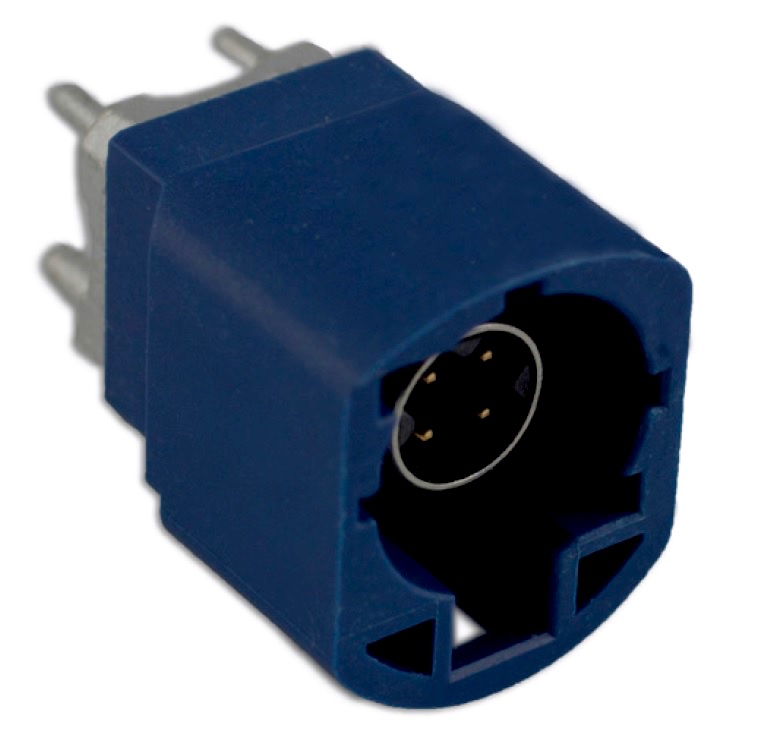The Connected Car is Closer Than it Appears
The technologies that make the connected car possible are on an accelerated evolutionary path. Some technologies are already on the roads and others are heading out in the near future, fueled by component innovations and high-speed access.

When General Motors first introduced OnStar on its vehicles in 1996, it marked the birth of the “connected car.” In the 20+ years since then, cars have continued to become smarter and more connected to the world around them. According to a report published by Visiongain, the global connected car market will reach a value of $123 billion by 2020. This is massive growth, considering that it was only a $34 billion industry in 2015. Even though the global connected car market penetration is only at 8.0% in 2018, it is expected to reach 19.3% by 2021. By 2020, a projected quarter of a billion connected cars will be on the road.

This rate of acceleration is due to the numerous technological advances that have been fine-tuned and adopted in a short period of time, including advanced driver assistance systems (ADAS), safety technologies, and in-car infotainment. The electronics that facilitate these features have also kept pace, evolving to handle higher data speeds, meet low weight requirements, and endure inclement road conditions. Ruggedized, secure connectors that can handle shock and vibration, temperature extremes, and other realities of the road are key, as are small, lightweight connectors and cables that can offer high performance and help minimize the overall weight of the significant electronic content of connected cars. Adjacent technologies, such as sensors and antennas, have also joined automotive systems.
The hardware involved in connected automotive solutions extends across engine management and control, exhaust monitoring and cleaning, infotainment and communications, in-car power, lighting, safety and security systems, navigation, and telematics systems. In 2018, connected hardware components were valued at a worldwide market volume of USD $9.765 billion.

Gen 4.0 of Amphenol RF’s FAKRA connector series will be an integral part of the movement toward increasingly connected cars and autonomous, self-driving vehicles. These connectors are designed to be used in important V2X applications like blind-spot monitoring, emergency vehicle warning systems, and autonomous braking. This generation of products is also an upgrade over previous generations because it is specifically intended for high-volume users with factories that utilize high-speed automated cable assembly production equipment.
Safety
One of the key goals in the development of the connected car is to make roads safer. Individual technologies have made great strides in improving automotive safety. For example, a 2013 study by the Insurance Institute for Highway Safety showed that automatic braking systems reduced rear-end crashes by around 40% and forward collision warning technology reduced accidents by 23%. In the connected car, these technologies are working in tandem with monitoring systems to further enhance safety. Many different types of advanced driver assistance systems (ADAS) are being utilized in both driver-operated and autonomous vehicles. While the implementation of fully autonomous vehicles for consumers is still at least a few years from becoming a reality, various forms of ADAS are being implemented now. Twenty automakers, representing 99% of the US auto market, have pledged to make automatic emergency braking (AEB) a standard feature in vehicles by 2020 and the overall ADAS market is expected to grow to USD $10 billion by 2022. LiDAR, another autonomous vehicle technology, helps cars avoid collisions by using lasers to detect the position and distance of surrounding objects.
V2X Connectivity
Vehicle-to-X (V2X) connectivity uses dedicated short-range communications (DSRC) to turn mobile devices and fixed nodes into a mesh network for data sharing, creating an interconnected network for vehicles and infrastructure systems that will enhance the future of transportation.

For example, advances in V2X technology will improve the quality and accuracy of ADAS and other driver safety technologies, as V2X technology provides real-time advisories that alert drivers to imminent hazards on the road. It can also optimize traffic flows, reduce congestion, and minimize carbon emissions. There are three main components of V2X technology: Vehicle-to-Vehicle (V2V), Vehicle-to-Infrastructure (V2I), and Vehicle-to-Pedestrian (V2P). The arrival of 5G connectivity will significantly enhance these capabilities as well; in fact, current standardization efforts center on capabilities that are dependent on 5G speeds.

Amphenol RF’s 6.0GHz FAKRA connectors are designed to support DSRC and V2X applications, ranging from real-time alerts and updates that quickly inform drivers of potential hazards on the roadway and help prevent crashes and collisions to e-parking and toll payments. They provide excellent VSWR performance from DC to 6.0GHz and meet USCAR-17 requirements.
Infotainment Systems in the Connected Car

Amphenol RF’s High-Speed Data (HSD) cable-mount connectors are available as plugs and jacks and provide a single solution that works across many digital transmission standards, such as low-voltage differential signaling (LVDS), Gigabit Video interface (GVIF), USB, IEEE 1394, and Ethernet. These connectors play a vital role in providing data transmission for current and future in-car entertainment technologies including infotainment modules, head-end units, and consumer ports.
In addition to better safety technology, connected cars include advanced infotainment systems. Stereo and video features in these vehicles can respond to voice commands, connect drivers to entertainment managers (e.g., Apple’s Siri or Amazon’s Alexa), and adjust the lighting and climate control systems to suit the driver and passengers. Many experts predict that the rise of autonomous vehicles will create a much higher demand for in-car infotainment options, and this industry’s growth opportunities are not limited to just software and media companies. The global in-car infotainment hardware market is expected to reach a value of $36 billion by 2021, compared to $20 billion in 2016.
Like this article? Check out our automotive, e-mobility, autonomous vehicle, electric car, high-speed data, industry standards, and Connector Basics articles, our Automotive Market page, and our other 2019 articles.
- The Connected Car is Closer Than it Appears - March 5, 2019





